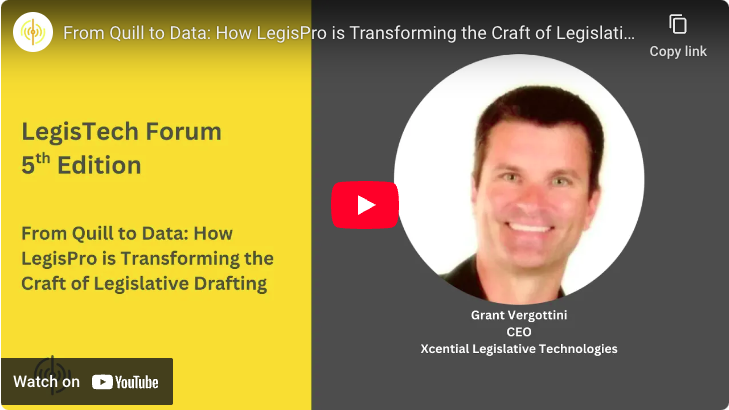MS Word vs. XML Editors
April 1, 2025


Why it matters for legislative and regulatory drafting
Are you responsible for the technology transformation of your legislative or regulatory system?
You have some big decisions to make and some tricky conversations ahead.
What is easy?
- Future proof. Future-proofing is essential. A modern system must surpass current capabilities and adapt to future needs.
- LegalDocML. It is the international standard and used across Europe, United States, Africa, and parts of Asia. LegalDocML is designed specifically for legislation and regulation. It provides you programming capabilities to automate workflows, and the needed mechanisms to consolidate and manage law.
- Component Based System. Related to future proofing, modern systems are built in components. The days of large monolithic systems are gone. Things change too fast. You want the ability to add, upgrade, and replace applications and processes without expensive system engineering.
But not everything is easy or simple.
What is difficult?
- Change Management. Getting individuals to adopt new tools and ways of working.
A stubborn change management issue is the drafting tool. Adding lightweight DAP (digital product adoption) tool to a web-based XML editor can help users learn the system and become effective quickly. Training and support can help power-users develop quickly to assist others. And some modern XML editors will surprise users with their familiar interfaces; especially if you have reviewed these editors in the last 5 years.
If you invest in a future proof, component based system that uses LegalDocML, does it really matter if you draft bills, regulations, and amendments in MS Word?
The most obvious reason to move away from MS Word is DOCX. It is XML. It is not LegalDocML. Therefore, at some point you need to translate. Translations create a meaningful opportunity for error. Six Sigma taught us to eliminate variation and focus on data as the root cause of error.
The Semantic Gap. DOCX focuses primarily on visual formatting. LegalDocML focuses on structure and meaning. The meaning of part of a document is ambiguous in DOCX. Automating the extraction of meaning from DOCX into LegalDocML is difficult and uneven; therefore creating opportunity for error. This is antithetical to the mantra of precision in legal drafting.
In DOCX, a numbered list ight be created using different formatting methods, leading to inconsistent XML. In LegalDocML, the numbered list is explicitly tagged, ensuring consistency and accurate processing. This is meaningful when you want to automatically attach a list of amendments to a bill.
Variability and Complexity. Variability and complexity arise because the structure of the XML produced by DOCX depends on how a draft is created. This variability makes accurate transformations complex. LegalDocML is complex by design to handle a wide range of tags and use cases. However, while editing this complexity becomes an opportunity for meaningful structure (if we can hide that complexity from the drafter).
User Familiarity. User familiarity with MS Word is widespread. It is a familiar interface and provides rudimentary tools to track changes. XML editors began as developer and production tools; the interface of most still feels foreign and distracting from the work of drafting text.
However, the choice of XML editor is crucial. Modern XML editors, like LegisPro, were built recently and reflect the look and feel of older word processors. Not only are the interfaces familiar, but they unlock precision and automation.
Using DOCX and MS Word to draft important legislation and regulation is a compromise.
Invest the time to evaluate the interface and power of native XML editors, like LegisPro, before giving up on change management and settling for a system with more opportunity for error.
Author: Marty Bickford








